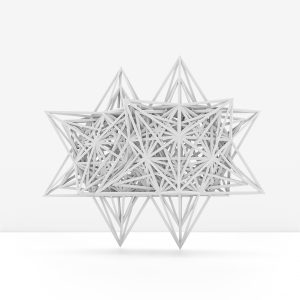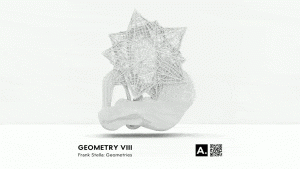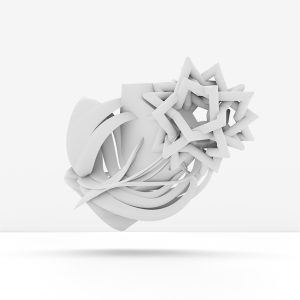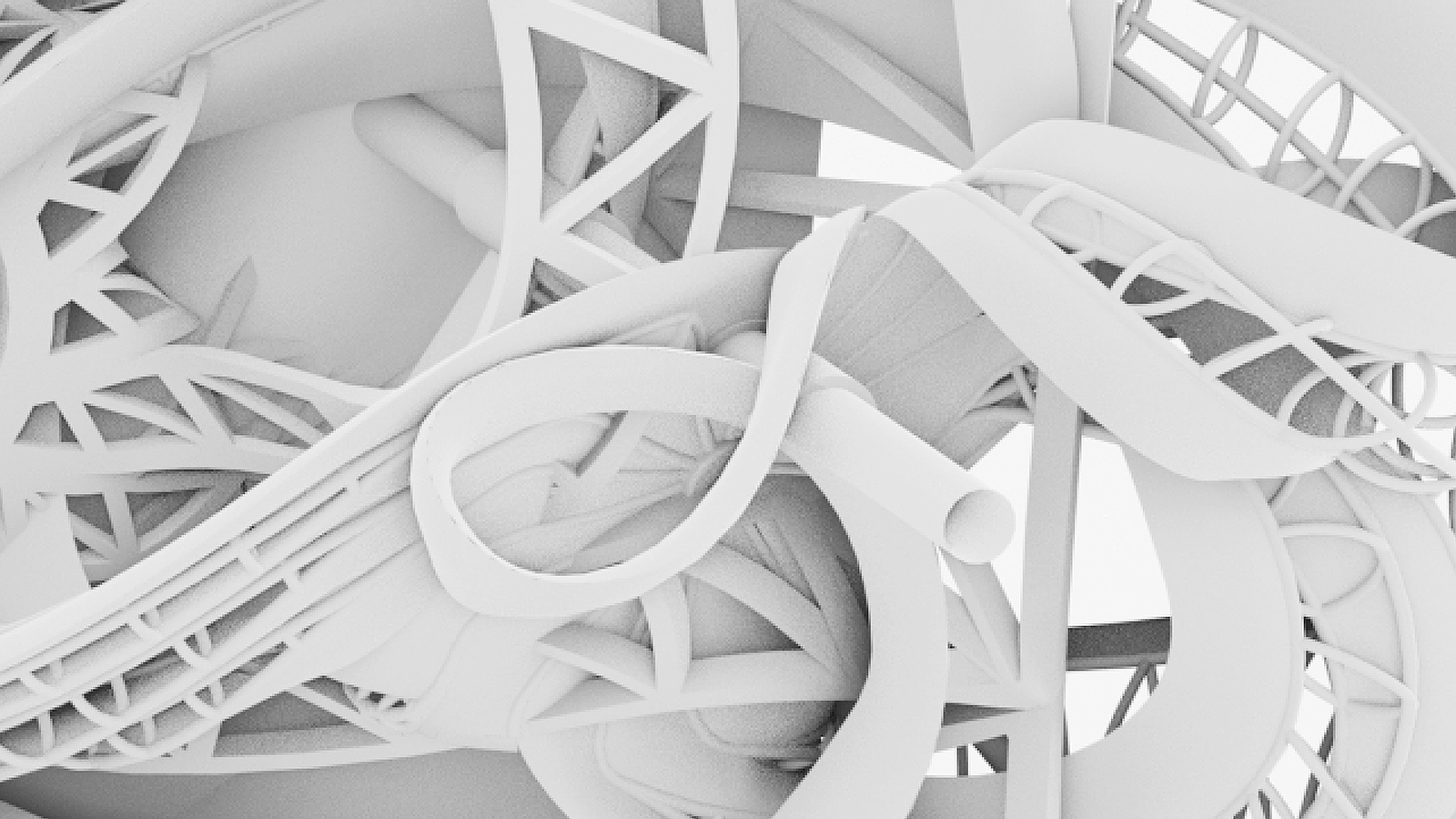After decades of mastering minimalism on canvas, Frank Stella, in his latter-day practice, has sought a third dimension in his work. Beginning in the 1990s, he has produced sculptures that spatialize the geometric explorations he began in his paintings, becoming an early adopter of techniques such as digital modeling, 3D scanning, and rapid prototyping. These digital processes, he’s said, “can be a way of introducing something unknown into the work of art.” And uncharted dimensions remain for the 86-year-old artist as he now avails himself of the latest digital tools that Web3 has to offer.
On September 9, Stella will land his first NFT collection, titled Geometries. Each NFT represents an original geometric sculpture by the artist, including 3D files and associated rights, allowing holders to print their own physical models. The Web3 project isn’t just a first for Stella, but marks the debut of ARSNL, the new digital platform by the Artists Rights Society (ARS), which shepherded the venture.

Frank Stella’s first NFT collection encompasses original geometric sculptures and printing rights, allowing collectors to print the models in their choice of size and material. Image: Frank Stella, “Geometry II,” 2022 / Courtesy of ARSNL
Launched to assist artists and partners as they make their way onto the blockchain, ARSNL, in line with the mission of its parent organization, will center artist-first policies, from royalties to resale rights, within the Web3 space. According to Katarina Feder, Vice President and Director of Business Development for ARS, such guidance was actively sought by ARS members in the wake of NFTs’ mainstream emergence — and the Society was well-placed to lead on it.
“It just became clear that nobody else was going to do it the way that we know how to do it when it comes to copyright protection,” she tells Jing Culture & Commerce. “We have a different relationship with artists than museums and galleries do, which enables us to open up a different ecosystem that allows for artists to have a lot more agency in the sale of their work.”

By inviting NFT holders to create their own derivative works, the project bespeaks Stella’s mindfulness of the collector community. Image: Frank Stella, “Geometry VIII,” 2022 / Courtesy of ARSNL
Stella’s NFT project is remarkable on a number of fronts — democratizing ownership by offering a Stella original at a friendly price, for one — though more so is how he has maximized the utility of the medium in a way that reinterprets and expands his own practice. “When you’re in the digital space where things move at the speed of light,” says Misha Libman, Co-Founder of ARSNL, “you have to start thinking about creating works that are not necessarily just about ownership, but more about participation.”
Co-creation is centric to Geometries, which, besides allowing collectors to print the sculptures, invites them to add color, pick their own material or size, and create derivative works. Stella’s openness, says Libman, bespeaks his mindfulness of the collector community. This much-buzzed-about “community” has played an increasingly central role in both creation and commerce in the NFT art space, being made up of people who aren’t just invested (in every sense of the word) in the work, but are eager to participate in the work’s trajectory.
Communication with collectors and creating that feedback loop is now-vital to the success of any NFT outing (a point that Libman highlighted at Christie’s Art+Tech Summit). “Depending on the artist and their practice, it’s possible to create works that follow the ethos of this community. Currently, successful projects do require this engagement almost,” he adds. “There is a little bit of misconception about how the NFT space is equitable and anyone with a good idea can be successful. Actually, the same way you need to sell yourself in physical space translates into digital space.”

“Every high-profile artist, and even estates and foundations, are excited by something like this,” says ARS’ Katarina Feder of the Web3 space. Image: Frank Stella, “Geometry I,” 2022 / Courtesy of ARSNL
Geometries, with its allocation of printing rights, also touches on an as-yet unregulated gap in the NFT art space: copyright. As an ARS member, Stella himself has been vocal about preserving artists’ rights, just as ARSNL is eager to institute protections for creators in the Web3 realm. “My hope is that as we establish ourselves, we can potentially work with platforms to come up with safeguards that don’t ruin the fun for everyone, but still make sure things are done above board,” says Feder.
Ultimately, the creation of these standards will be key as the field of NFT art and commerce develops, ensuring artists can easily specify what they’re selling and collectors are aware of what they’re buying, notes Libman. And more so as artists find more experimental avenues into Web3. Befitting an artist who has long pursued modernism in whatever dimension, Stella’s NFT debut represents a conceptually innovative project for unlocking licensing to invite participation, in turn injecting that “something unknown” into the collection and his practice.
Other artists are not too far behind as well, according to Feder. “Often, speaking to people in the art world, they roll their eyes and assume artists feel the same way [about NFTs]. It’s absolutely not the case,” she says. “Every high-profile artist, and even estates and foundations, are excited by something like this. It’s not like they want to get involved for the money grab; they want to do things that are experimental and they understand that their work, much like the world, has to keep evolving.”



